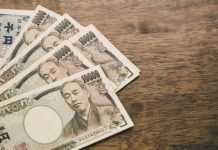The S&P500 finished January with a strong two-day rally, but the index is still more than 5% lower than where it kicked off the year, having recorded its worst month since March 2020. Nasdaq closed yesterday’s session up by more than 3% for the second day in a row.
A part of the rally is explained by dip-buying from those who believe that the stocks hit a bottom as a result of an aggressive hawkish Fed pricing across the market and a part of it is explained by some short covering, which got traders to buy back the shares that they initially bet against to close their positions.
Nasdaq is already up by almost 9% from the January dip. Yet, 3-4% gains are often sign of high volatility and stress, and they could easily melt down in no time. What we need to see now is smaller but more sustainable gains to call the end of the January selloff.
Good news is that some Federal Reserve (Fed) officials are finally out trying to sooth investors’ nerves saying that they still want to avoid unnecessarily disrupting the US economy. The softish remarks help easing the worry of seeing a 50bp hike in FOMC’s March meeting. But does it really matter? The rates and the yields are so low that the difference between a 25 and 50 basis-point hike is only in the head of investors. What will really make the difference is the Quantitative Tightening and given the steep rise in Fed’s balance sheet since March 2020, even halting the growth would be an abrupt change for the market conditions.
US index futures traded slightly in the negative in Asia, while the European indices gained with the Eurostoxx futures adding up to 1% in the overnight trading session.
The DAX index successfully held ground above the 15000 mark in January despite the data showing a slowing German recovery and the rising inflation. The European stocks are set to outperform their American peers with the European Central Bank (ECB) doves nowhere to be found.
The EURUSD is back above the 1.12 mark, and the move is mostly driven by a broadly stronger US dollar than a more bullish pricing on the euro.
Elsewhere, the Reserve Bank of Australia (RBA) maintained its rates unchanged at today’s meeting but decided to stop its A$ 275 billion bond buying program while insisting that the decision doesn’t imply an imminent rate hike. Interestingly, the Australian dollar used to be a high-yield currency, and now it’s about to find itself yielding less than the US dollar. This means that a move below the 70 cents mark in AUDUSD wouldn’t be necessarily short-lived even with the recovery in iron ore prices which is fundamentally positive for the Aussie.













